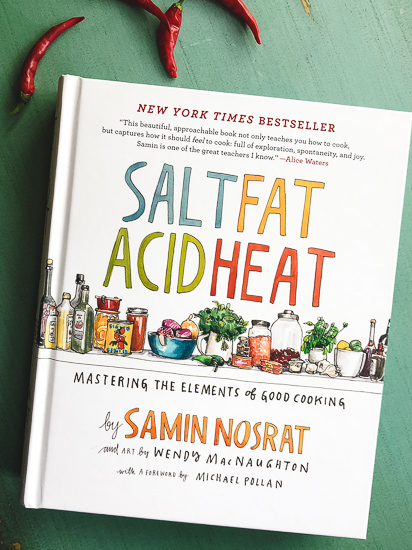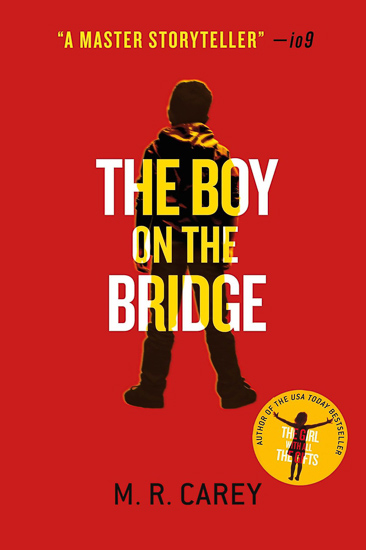
Let me begin by saying that I love the concept of The Kitchen Ecosystem: Integrating Recipes to Create Delicious Meals. I love the idea of using every bit of what you have, a sort of nose to tail idea that also includes fruits and vegetables. Just the other day, I was chopping off some broccoli florets to roast and I was chucking the big stalks into the compost bucket. I thought to myself, "this could be diced in a stir fry or pulsed into a pesto or used in a soup." I didn't do any of those, but at least I composted it.
This book begins with an introduction the concept of using everything, using the leftovers, by-products, and scraps. One concept that I took away from this is the idea of canning one or two jars of something. Frequently the author will can something at the same time is using another part of the ingredient in a recipe. This is a great idea and I think once you got in the habit of doing it, it would be easily doable.
After the introduction, the book is divided alphabetically, mixing fruits, vegetables, and proteins. So that beef is between asparagus and beets, and chicken is between cherries and corn. Each recipe section is divided into four sections: Eat Some Fresh, Preserve Some, Use the Preserves, and Use the Scraps. For example: Apples has Apples, Smoked Pork Butt, and Onion Saute; Stewed Apples with Red Cabbage; and Baked Apples with Bread Pudding under Eat Some Fresh. Under Preserve Some are Applesauce and Lady Apple Basil Jelly. Under Use the Preserves are Potato Pancakes with Applesauce and Applesauce Cake with Raisins and Walnuts. Under Use The Scraps are Apple Peel Jelly Stock and Apple Juice Granita. The recipes are listed in a flow chart fashion - the Apple Juice Granita comes off of the Applesauce box because you use the juice left over from making applesauce to make the granita.
After the list of recipes there is a final section called Preserving and Recipe Techniques. This is where the author covers everything from canning, to smoking, to preparing pasta and crepes. This section is around twenty pages and contains a wealth of valuable information.
There are so many recipes that I marked to try, here are just a few: Braised Chicken with Apricots and Tarragon, Asparagus Pesto, Beet Jam, Shrimp and Corn Casserole, Pickled Fennel, and Ginger Syrup.
I love this book. I realize the concept might not be for everything, but I have always felt like there was more that I could do with our food. Even if I am making a recipe from another cookbook, I will check this book to see if there is anything extra that I can do with the ingredients.
Disclaimer:
Amazon links are affiliate links and I earn a small percentage if you click through and buy. Believe me, it barely covers a smidgen of my cookbook addiction!





mae says
The concept appears sound -- sort of going back to the way things were done on self-sufficient farms a couple of centuries ago. You make the book sound a bit challenging to use, though -- the organization sounds a bit problematic. What do you think?
Pam Greer says
No I don't think it's problematic, as a matter of fact, the simple alphabetical organization is kind of easy to use. I think the key comes in deciding when and how to use it. If you are making a recipe that calls for peeled apples and you have leftover peels, you might want to check this book to see what you could do with them.
Marjie says
I made Radish Green Soup a few years back, when my little boys had a garden and radishes were, of course, the first things to come in. That counts, right? Try using your broccoli stems to make cream of broccoli soup; just a few tops for color really make all the difference. I like to use everything in my kitchen, too. Sounds like a great book.
Edible Celebrations (@lavesta) says
I love the concept of this cookbook Pam! As you know, I have made drastic changes to my diet lately and I have been trying to come up with a way to use the old with the new. For instance, I only use egg whites when cooking but Marion is able to eat whole eggs. A flow chart approach might just help out.
The notion of using an ingredient to its fullest extent is a daunting task. I still insist there must be something better to do with banana skins for instance besides useing them to "feed" the roses.
Looks like I have yet another book to add to my wish list. Bookmarked and Pinned!!!
Thank you so much for sharing and linking up to Cookbook Wednesday, Pam.
Pam Greer says
Some of the recipes aren't as useful as others, (several veal recipes - which I won't be making), but I do like the concept.
Melynda@OurSundayCafe says
Wow, love this book and I have not even looked at a single page in real time! The philosophy totally matches mine, so the ideas will be wonderful. Maybe I should make this my 1100 book.....
Pam Greer says
Definitely! 1,100. You are my hero.